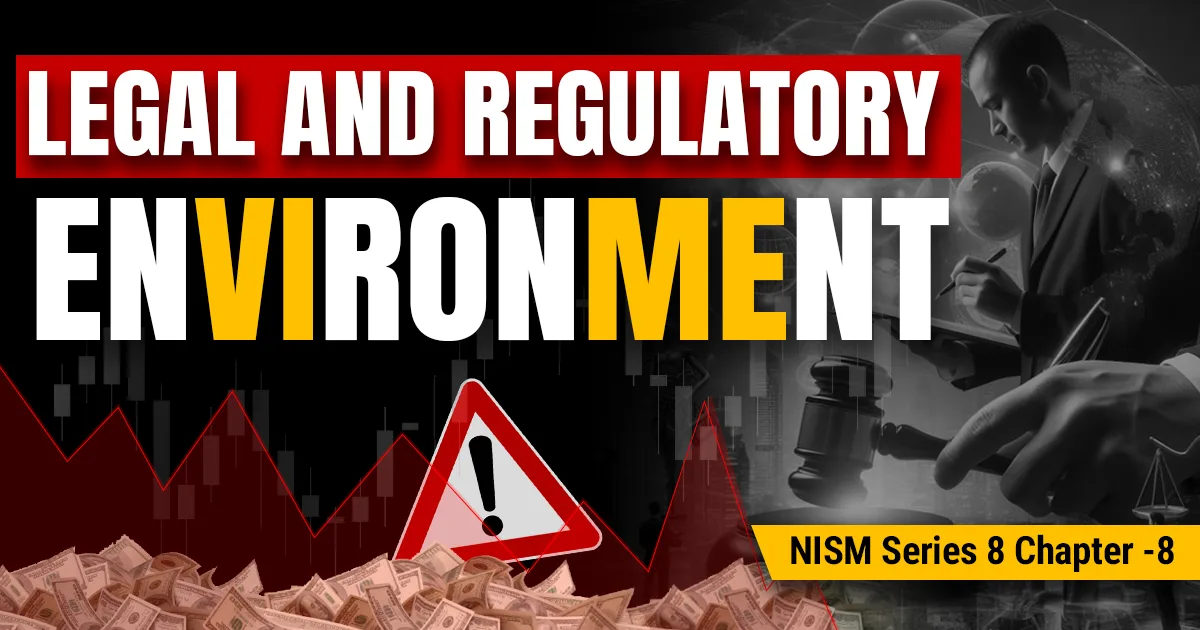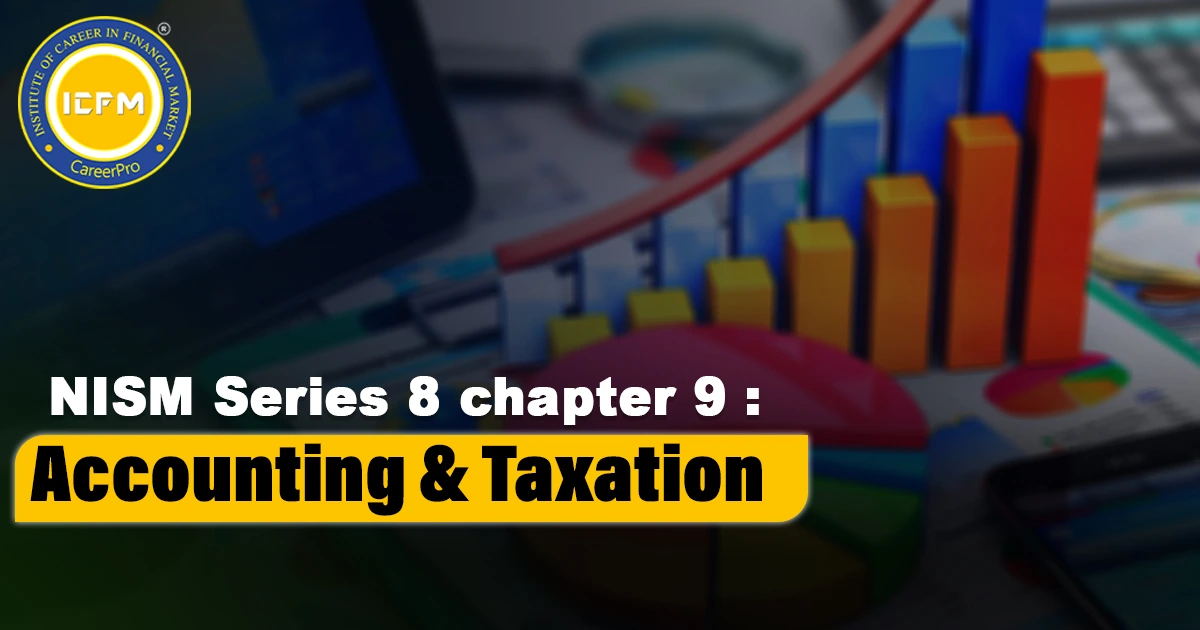NISM Series 8 Chapter - 8 Legal and regulatory environment
SEBI as the Key Regulator:
In India, the Securities and Exchange Board of India (SEBI)is the apex regulatory authority that is responsible for the overall supervision of the securities market. It came into being to serve the investor's interest, help in the development of the securities market, and control its operations.
Regulation of securities markets by SEBI coordination includes the formulation of policies, ensuring equity in practices, surveillance of trading activities and culpable practices such as insider trading.
Key Legislation:
SEBI Act, 1992: This act provides legal backing to SEBI, which is authorized to control and supervise the functioning of the securities market, protect investors and ensure that there is order and integrity in the operation of the market.
Securities Contracts (Regulation) Act, 1956: This act regulates the business of trading in securities in Indian markets, provides requirements for seeking listing on stock exchanges, and addresses issues of market abuses.
Companies Act, 2013: Provides the framework to monitor compliance with corporate governance principles by specifying transparency; and equity allocations to shareholders and addresses company law to companies operating in the arena of the securities market.
Other Regulatory Bodies:
Reserve Bank of India(RBI): The governance authority of the financial system and monetary policies which is responsible for the overall liquidity and credit aspects of the market about the securities
Market. Ministry of Corporate Affairs (MCA): Agency tasked with the regulation of the corporate sector to ensure that businesses adhere to and comply with laws and regulations. Insurance Regulatory and
Development Authority of India (IRDAI): Provides oversight to insurance business organizations and their involvements in the securities market.
PFRDA (Pension Fund Regulatory and Development Authority): Supervises pension funds that are major participants in the securities market.
Role of StockExchanges and Self-Regulatory Organizations (SROs): Stock Exchanges for instance captained by the NSE (National Stock Exchange) and BSE (Bombay Stock Exchange) provide a hub for trading and thus, are central to the purpose and the role of the various mechanisms housed in the securities market.
Self-regulatory organisations (SROs) such as stock exchanges and associations including Brokers Associations ensure the participation of market players in complying with the standards and regulations of the industries.
Market Conduct and Compliance:
Brokers, sub-brokers, mutual fund houses, and other market intermediaries need to adhere to SEBI norms and work ethically while dealing in trades and making investments.
These obligations apply to all firms that provide the services of intermediaries with clients and to listed companies to uphold the integrity of their businesses.
People cannot think about transacting without incorporating the KYC requirements, anti-money laundering (AML), or market abuse provisions as these form an essential requirement in the pursuit of the law.
Enforcement Mechanisms:
SEBI is empowered to take measures such as imposition of fines, suspension of trading certificates and other legal action against non-compliant persons.
Such non-compliance with any of these new regulations might lead to investigations however such non-compliance forms a niche area as SEBI takes a preventive approach with regard to the investigation and surveillance of market activities to unearth and deter fraudulent practices.
Conclusion:
Chapter 8 offers a detailed look into the legal and regulatory environment of India’s securities market, with a focus on the SEBIAct, 1992, and other key regulations. It emphasizes the importance of compliance by market participants, transparency in operations, and the enforcement mechanisms that ensure a fair and efficient market. This chapter highlights the collaborative role of regulatory bodies, stock exchanges, and self-regulatory organizations in maintaining the integrity of the financial ecosystem and protecting investor interests.









